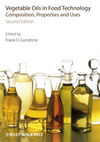Health and Functionality from Fats and Oils
New technologies on fat- and oil-based ingredients, plus technical tips on reducing fats were offered at one Prepared Foods’ R&D Applications Seminar.








Fats and Oils: A Healthier Tomorrow
Dietary advice on fats has gone from reducing all fat to consuming the “good” and avoiding the “bad” fat. Asim Syed, director, Global R&D, Healthy Oils Applications at Dow AgroSciences, explained this and more in his Prepared Foods’ R&D Seminar presentation titled “Fats and Oils: Developing Today for a Healthier Tomorrow.” He covered the evolution of fats and oils, including the rise and fall of partially hydrogenated fats and the reduction/elimination of trans fats from the diet.
Current clinical research supports the benefits of unsaturated fats, including omega-9 fatty acids. Monounsaturated fatty acid-based fats, such as omega-9 oils, can protect against cardiovascular disease risk factors. Canola, sunflower and soybean oils are typical sources of monounsaturated fats. Formulating foods with omega-9 oils can help create foods with great taste, improved nutritional profiles and cleaner labels.
For functionality, oil blends of liquid-stable oils and hard fats are being used to reduce saturated fat—without compromising fat structure or melt profile. Specialty oil blends can reduce or eliminate the need for added antioxidants and fit within existing product formulas and processing environments. Innovative fat blends maintain the functionality of liquid oil while providing heat and oxidative stability for processing and shelflife needs.
“The next generation of healthy oils includes omega-9 oils alone, and in blends with other functional oils and fats,” promised Syed. “These innovative oils provide health, convenience, functionality and taste to food scientists, whether they are working on new product development, product improvement or cost-savings projects,” he added.
Syed also explained some functional considerations when switching to healthier fats. For example, when replacing oils containing trans fats, it is important to consider their excellent functional properties, including high melting points; sharp melting curves; good process stability; long shelflife; creamy mouthfeel; fast flavor release; and the good lift and texture provided to foods.
Saturated fat properties to consider are high melt point and flatter melting curves. Saturated fat is typically very stable with a long shelflife, but it may have a waxy mouthfeel and a slow flavor release. It provides a fair “structural lift” to baked and manufactured foods. On the other hand, unsaturated fatty acids have a lower melt point; are liquid and less stable; have shorter shelflife; oily mouthfeel; too rapid flavor release; and may require thickening. Omega-9 oils provide excellent oxidative stability but do need to be blended with solid fats for functionality, where needed.
Food processing technologies now allow for oil blends that provide a desired fatty acid profile with the right functional properties and a cleaner label. For example, interesterification modifies the functional properties of the blend, which are totally different from the un-interesterified blend. In this process, liquid oil and solid fat (fully hydrogenated) are blended to the desired fatty acid profile, and then the fatty acids are distributed among the triglycerides, creating new components.
Interesterified oils can replace or reduce the amount of palm oil. In microwave popcorn, omega-9 oil provides stability, functionality and nutrition, reducing total and saturated fat significantly and eliminating trans fats. Omega-9 oil provides a healthier delivery of buttery flavor to popcorn, which is already a healthy whole grain.
In summary, Syed said, “Successful reformulating with healthier oils requires total cross-functional buy-in, telling the full story with more details on key benefits to targeted audiences.”
“Fats and Oils: Developing Today for a Healthier Tomorrow,” Asim Syed, director, Global R&D, Healthy Oils Applications at Dow AgroSciences, asyed@dow.com, 317-337-4605, www.dowagro.com
—Summary by Elizabeth Pelofske, Contributing Editor
Benefits of New Soybean Oils
Soybeans have a rich history, dating back more than 5,000 years to China. First grown in the U.S. in 1829 for soy sauce, soybeans had multiple uses by the early 1900s and an explosion of uses during the 1950s.
“Today, soybeans represent 25% of U.S. cropland,” explained Linda Funk, executive director of the Soyfoods Council, in her Prepared Foods’ R&D Seminar entitled “New Soybean Oils: Increased Functionality, Formulation Solutions and Consumer Benefits.”
Soybean oil contributes a good source of poly- and monounsaturated fatty acids, helping to lower the risk of heart disease when substituted for saturated fatty acids. Another benefit of soy oil is the presence of its essential linolenic and linoleic fatty acids. Soybean oil is low in saturated fat and is a primary commercial source of vitamin E, which provides antioxidant defense against cell damage.
2010 Dietary Guidelines recommend keeping trans fat consumption as low as possible by limiting foods containing synthetic sources of trans fats, such as partially hydrogenated oils, and by limiting other solid fats. Liquid soybean oil can replace solid fats in certain applications.
“New soybean varieties have enhanced fatty acid compositions, which increase oxidative stability; thus, no hydrogenation is required; therefore, no trans fat formation,” Funk explained.
Low-linolenic acid soybean oil was commercially introduced in 2005. In 2010, there were one billion pounds available. Low-linolenic soy oil has a maximum of 3% linolenic acid vs. 7% in conventional soy oil.
“Performance of low-linolenic soy oil replicates lightly hydrogenated soy oil in light-duty frying and also has improved shelflife,” she stated. This was a first major step in soybean oil trait improvement towards trans fat reduction.
High-oleic soybean oil was available in limited amounts for testing in 2010 and is commercially available in 2013. With a composition of 68-78% oleic acid, 6-12% saturates and less than 3% linolenic acid, high-oleic soy oil has exceptional oxidative stability for high-heat frying and potential for blending to produce bakery shortenings, margarines and spreads.
Anticipated in 2013, SDA soy-based omega-3 oil contains 18-22% stearidonic acid (SDA) and rapidly converts to omega-3 fatty acids in the body, thus promoting heart health, and reducing inflammation and arthritis. SDA omega-3 oil also enhances taste profile in some foods. A petition was approved for the SDA variety by APHIS and USDA as of July 13, 2012.
Qualisoy is a collaborative effort within the soybean industry, which is leading the drive from a single commodity seed to higher value, specialized varieties of soybean. It is leading the way to new functional soy oils for salads, cooking, baking, frying, margarines and other applications for the future.
“New Soybean Oils: Increased Functionality, Formulation Solutions and Consumer Benefits,” Linda Funk, executive director of the Soyfoods Council, lfunk@thesoyfoods council.com, www.thesoyfoodscouncil.com
—Summary by Elizabeth Pelofske, Contributing Editor
Palm Oil: Functional Component for Food Applications
Typical saturated fats used in the food industry include palm, butterfat and coconut, with increasing saturated fat content in that order. The food use of palm oil in the U.S. has skyrocketed in the last decade, due to reduction and replacement of trans fats.
Gerald McNeill, vice president of R&D at Loders Croklaan, in his seminar, “Palm Oil as a Functional & Healthful Component for Food Applications,” explains: “Saturated fat has also been erroneously blamed for heart problems since the 1980s. At that time, palm oil, coconut oil and tallow were eliminated from retail foods and fast-food chains like McDonalds and replaced by partially hydrogenated vegetable oils.”
Ironically, in a 1988 Nutrition Action newsletter, CSPI endorsed this with a statement to the effect that people are better off choosing products made with hydrogenated soybean, corn or cottonseed oils, rather than butter, lard, beef fat; or palm, palm kernel or coconut oil. And, it did not help that in 1994, when the Nutrition Facts panel was introduced, saturated fat was required to be displayed—but not trans fat. However, a landmark 1990 study by Mensink and Katan found trans fat may be worse than saturated fat, because it lowers HDL. After this, CSPI condemned trans fat. They petitioned the FDA to include trans fat on the nutrition facts panel in 1994 and to revoke the GRAS status of hydrogenated vegetable oils in 2004. FDA announced trans fat labeling regulations in 2006. Hence, the re-growth of palm oil.
“Current consumer research into [the] use of palm oil indicates that palm oil is perceived as all natural,” explained McNeill. Science indicates saturated fat increases HDL more than any other component of the diet, and trans fat is seven times worse than saturated fat. Saturated fat is not as bad as previously believed, but the American Heart Association still recommends saturated fat intake at no more than 7% of calories.
When replacing partially hydrogenated oils with palm oil, the benefit is that through fractionation, palm oil can be made into a single natural-product solution. Palm oil is versatile, in that it can be fractionated into a hard solid fraction and a liquid fraction using a hydraulic press and blended into different proportions—creating “sans trans” and reduced-saturated fat products.
Palm oil is a versatile solution for products that require a solid fat, and it can be used to make an unlimited variety of products. Palm oil is a natural solid fat with no chemical processes required, and it can be blended with vegetable oils for optimum functionality and health.
“Palm Oil as a Functional & Healthful Component for Food Applications,” Gerald McNeill, vice president of R&D at Loders Croklaan, Gerald.mcneill@croklaan.com, www.croklaan.com
—Summary by Elizabeth Pelofske, Contributing Editor
Looking for a reprint of this article?
From high-res PDFs to custom plaques, order your copy today!










